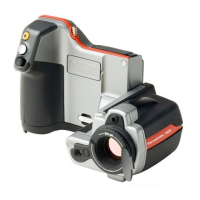Although a basic understanding of the construction of low-slope commercial roofs is
desirable when carrying out a roof thermography inspection, expert knowledge is not
necessary. There is a large number of different design principles for low-slope com-
mercial roofs—both when it comes to material and design—and it would be impossible
for the infrared inspection person to know them all. If additional information about a
certain roof is needed, the architect or contractor of the building can usually supply
the relevant information.
Common causes of roof failure are outlined in the table below (from SPIE Thermosense
Proceedings Vol. 371 (1982), p. 177).
%Cause
47.6Poor workmanship
2.6Roof traffic
16.7Poor design
7.8Trapped moisture
8.0Materials
8.4Age & weathering
Potential leak locations include the following:
■ Flashing
■ Drains
■ Penetrations
■ Seams
■ Blisters
27.2.3.2 Safety precautions
■ Recommend a minimum of two people on a roof, preferably three or more.
■ Inspect the underside of the roof for structural integrity prior to walking on it.
■ Avoid stepping on blisters that are common on built up bitumen and gravel roofs.
■ Have a cell phone or radio available in case of emergency.
■ Inform local police and plant security prior to doing nighttime roof survey.
136 Publ. No. 1558792 Rev. a460 – ENGLISH (EN) – July 1, 2010
27 – Introduction to building thermography

